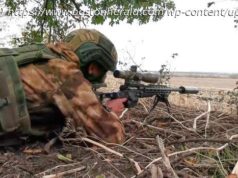An innovative marriage of weather satellites and a popular weather model called HRRR is helping fight historic California wildfires.
The wildfires in California have been utterly remarkable and equally destructive. Cal Fire reported on November 9th that the Camp Fire had surpassed 90,000 acres but was only 5 percent contained. At the time of writing, nine people were confirmed dead in the Northern California fire. Tragically, some of the bodies were found inside their cars, according to officials. For the first time in a decade, Sacramento County put restrictions on burning from fireplaces and wood stoves because of a wildfire. Unhealthy air is a significant problem in fire-impacted regions. Further down the California coast, the Woolsey Fire, powered by Santa Ana Winds ( see article by my colleague Trevor Name) and dry conditions, has forced over 250,000 evacuations as it spreads to the coast. Courageous firefighters and officials are risking their lives to battle the blazes, but so is an interesting blend of weather satellite data and the popular HRRR weather forecast model.
The Camp Fire in California on November 8th NASA
A long time workhorse of the U. S. satellite fleet is the Landsat Program. The image above is from the Operational Land Imager (OLI) on the Landsat 8 satellite. Using a combination of infrared (heat) and visible sensors, the active fires and the associated smoke plumes causing particularly bad air quality in Northern California are clearly seen. The Landsat-8 is developed by NASA for the U. S. Geological Survey (USGS) and images the entire Earth every 16 days.
The image below was captured by the Moderate Resolution Imaging Spectrometer (MODIS) on NASA’s Terra satellite. According to NASA, this image was captured on November 9th, 2018. The NASA Earth Observatory website points out that,
Strong winds pushed the (Camp) fire to the south and southwest overnight, tripling its size and spreading smoke over the Sacramento Valley… The High-Resolution Rapid Refresh Smoke model, using data from National Oceanic and Atmospheric Administration (NOAA) and NASA satellites, shows the smoke should continue to spread west. The image also shows two more fires in southern California, the Hill and Woolsey Fires.
California Fires captured by NASA satellites. NASA
While the images themselves are breathtaking and useful for locating fires, I hope you noticed the mention of the High-Resolution Rapid Refresh (HRRR) Smoke model. This model is a new experimental effort developed at the NOAA Earth Systems Research Laboratory (ESRL) and the Cooperative Institute for Research in Environmental Sciences. It builds on the capabilities of the HRRR weather model that many of us in the weather community rely on for short-term forecasting information. According to a discussion on NASA’ Earth Observatory page,
The High-Resolution Rapid Refresh Smoke model, or HRRR-Smoke, builds on NOAA’s existing HRRR weather model, which forecasts rain, wind, and thunderstorms. It ingests real-time data from the Joint Polar Satellite System’s Suomi-NPP and NOAA-20 polar-orbiting satellites, as well as NASA’s Terra and Aqua satellites… Central to HRRR-Smoke is an important metric called fire radiative power. FRP is a measurement of the amount of heat released by a given fire in megawatts. A large fire, for example, might reach about 4,000 megawatts per pixel (750×750 meters). Calculating radiative power and where it is distributed can help scientists pinpoint the active front of a fire and predict the density and trajectory of the smoke it will emit.
HRRR-Smoke forecasts include “Near-surface smoke” (within 26 feet of the ground) and “Vertically integrated smoke.” It is the «Near-surface smoke» that bothers our eyes and aggravates upper respiratory issues like asthma. Smoke in the vertical column is a hazard to the aviation community and other activities vulnerable to smoke in the Earth’s atmosphere.
One limitation of the HRRR-Smoke model is that it relies on data from polar orbiting satellites that take snapshots twice per day. The advantage of polar orbiting satellite data is the high-spatial resolution. However, wildfires can rapidly evolve. Ravan Ahmadov, developed the HRRR-Smoke model at NOAA’s Earth Systems Research Laboratory. He told NASA he hopes to incorporate geosynchronous satellite data in the future for near-constant viewing of rapidly evolving fires. Spatial resolution will suffer, however, because such satellites are 22,000 miles above the Earth.
A forecast for Saturday November 10th is provided below. The link for the experimental HRRR-Smoke products is found here.
Near surface smoke forecast for Saturday November 10th via HRRR-Smoke model NOAA
Dr. J. Marshall Shepherd, a leading international expert in weather and climate, was the 2013 President of American Meteorological Society (AMS) and is Director of the University of Georgia’s (UGA) Atmospheric Sciences Program. Dr. Shepherd is the Georgia Athletic Associatio…
Dr. Marshall Shepherd, Dir., Atmospheric Sciences Program/GA Athletic Assoc. Distinguished Professor (Univ of Georgia), Host, Weather Channel’s Popular Podcast, Weather Geeks, 2013 AMS President






